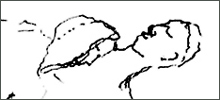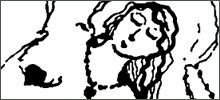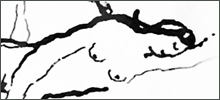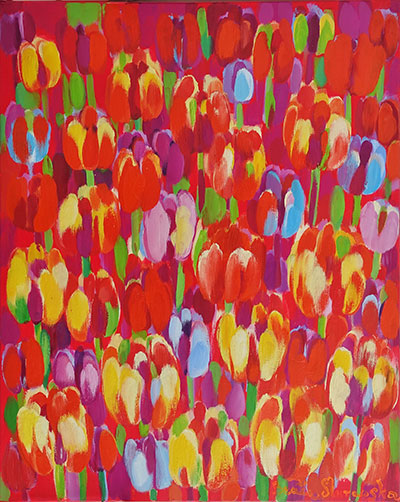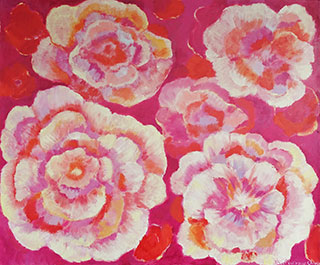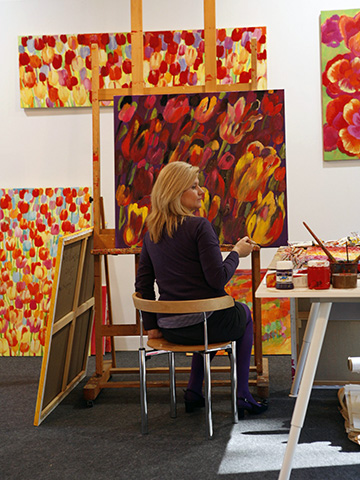Dreams, desires...
When I watch Beata Murawska's drawings, my memory suggests to me, as a background image, the Sleeping Gypsy by Henri ''Publican' Rousseau, Giorgione's, Venus Asleep, or the Venus with a necklace by Maillol. Venus - that Old-Italian goddess of spring and gardens, who was later on to be identified with the Greek Aphrodite; the one whose cult got Hellenised, the goddess of spring and vegetation being turned into the one of love. The round-hipped woman from Murawska's drawings, with her eyes half-closed, is a Venus and an Aphrodite at the same time, a goddess of delights and gardens filled to the brim with luxuriant vegetation and tropical fruits. The motif of dreaming of things is particularly visible there, even if in the manner in which womanish figures are placed on the plane - as if they were carried by a tender wave (of dream? oblivion? carnal pleasure? promise?). Some seducers, or the seduced, those ones? Dreaming of an intercourse, springing out of love, or satisfied already? And, the mystery of couple: the lovers amidst flowers, drowned in each other, and linked with the powerful hidden element that carries them forward.
On their naked arms, breasts, backs, buttocks, thighs, there blossom calyxes of tulips and poppies. This is as if life alone was disclosing, through those mutually loving bodies, its untamed strength. As if it poured, through them, tenderness and love into the world. As if those bodies, equal to this end to flowers, were but a product of some incapacitating cosmic desire which, as such, has no limits that it would be aware of. The lovers, lying face to face, insatiate, and themselves being a living part of nature, acquisitive yet reconciled with itself, dream their dream, their eternal 'now'.
In those paintings, there is erotic passion, intimacy, and joy. The delicate, often broken, and at the same time, sensual, line seems to reinforce such a reading of Beata Murawska's works. They are close to erotic verse of Octavio Paz, the Mexican poet, who once wrote: dressed in the colour of all my desires / you walk denuded like my thoughts / I walk through your eyes like across the water / tigers lapping up a dream in your eyes, / a hummingbird calcining in your flames, / I walk though your body like through the moon / and like a cloud through your thoughts, / I walk in your belly like in your dreams, / a maize dress is swirling and singing, / a crystal dress, your dress made of water (...)
.
In Murawska's drawings, we can find the well-known attributes of earthly paradise: the apple, the snake, two people offering love to each other on the bosom of friendly, untainted nature. An archetypal youth and joy, that. An affirmation of the existence. Time has as yet not put itself up in there, nor has it emptied anything; but the snake is already raising his head. We know what is going to happen then on. Flowers, that omnipresent motif in the artist's output, are, after all, the eternal symbol of fragility, of one's being thrown into the stream of time. Love, as created out of time, is sometimes termed the 'bloody flower'. But the painter has managed to record in her drawings her own particle of Paradise, that original nakedness, the origin that promises a heyday.




